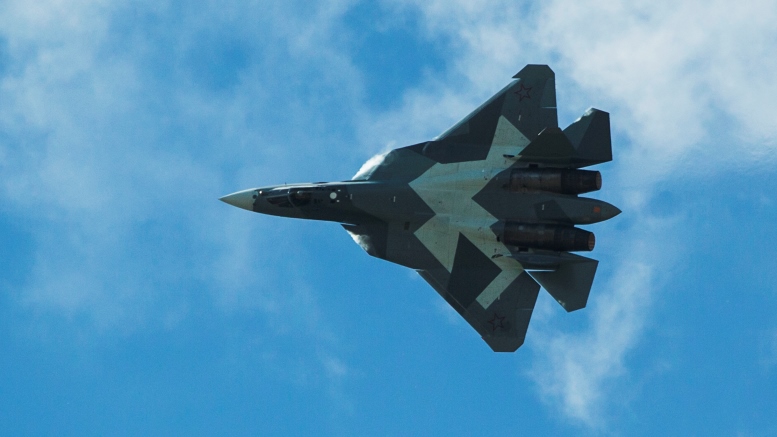
Squad Goals
It may still be 10 years before Russia’s sixth-generation fighter jet will be ready but officials say that the aircraft will have its own swarm of drones flying beside it.
Vladimir Mikheev, an adviser to the deputy head of Radioelectronic Technologies Concern — part of the Moscow-based state corporation Rostec — said the fighter jet will be unveiled in 2025.
With a supersonic speed of about 4-5 Mach, the unmanned aircraft will be able to enter near space and reenter the atmosphere in a designated spot, hundreds of kilometers away from the place of the original entry.

You Can’t Fly With Us
Pilots will be assigned a drone to command depending on their rank. “Depending on the status, he [the pilot] is given several subordinate drones,” Mikheev says. “They, in their turn, understand –– they must protect, for example, lieutenant Petrov. But if colonel Ivanov is in the cockpit, the number of subordinate drones should be more, and so forth.”
The drone aircraft will also be equipped with high-frequency electromagnetic cannons — too powerful for manned aircraft to operate without hurting pilots — designed to knock out enemy radio signals from a distance of about six miles.
Meanwhile, in the U.S.
The U.S., in parallel, is also working on sixth-generation fighter designs after the introduction of the Lockheed Martin Corp.-made F-22 Raptor and F-35 Joint Strike Fighter fifth-generation aircraft, the latter of which is still in development.
But rather than create a single sixth-gen platform capable of overcoming today’s threats — cyber, electronic attack, anti-satellite, surface-to-air — the Air Force has signaled an interest in trying to develop new weapons such as directed energy and hypersonic missiles that can be installed on updated aircraft.